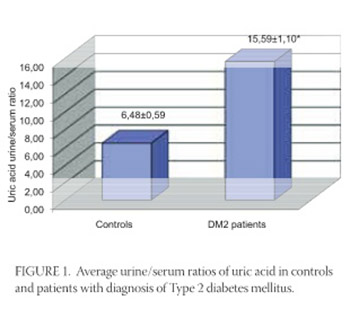Relevance of Uric Acid in Progression of Type 2 Diabetes Mellitus
DOI:
https://doi.org/10.17305/bjbms.2010.2736Keywords:
Diabetes mellitus, uric acid, insulin resistance, biomarkerAbstract
Recent studies have introduced serum uric acid (UA) as a potential risk factor for developing diabetes, hypertension, stroke, and cardiovascular diseases. The value of elevated levels of UA in serum as a risk factor for diabetes development is still under scrutiny. Recent data suggest that clearance of UA is being reduced with increase in insulin resistance and UA as a marker of prediabetes period. However, conflicting data related to UA in serum of patients with Type 2 diabetes prompted us to study the urine/serum ratio of UA levels (USRUA) in these patients and healthy controls. All subjects included in the study were free of evidence of hepatitis B or C viral infection or active liver and kidney damage. Patients receiving drugs known to influence UA levels were also excluded from this study. Analysis of glucose and uric acid were performed on Dade Behring analyzer using standard IFCC protocols. Interestingly, our data demonstrated about 2.5 fold higher USRUA values in diabetic patients as compared to control subjects. Furthermore, there was a trend of correlation of USRUA value with the blood glucose levels in diabetic patients, which was more prominent in diabetic men than in women. With aging, levels of uric acid increased in serum of diabetic patients, and this effect was also more profound in male than in female diabetics. In conclusion, this study showed significantly elevated USRUA levels in patients with Type 2 diabetes, a negative USRUA correlation with the blood glucose levels in diabetic patients, and an effect of sex and age on the uric acid levels. Since literature data suggest a strong genetic effect on UA levels, it would be pertinent to perform further, possibly genetic studies, in order to clarify gender and ethnic differences in UA concentrations.
Downloads














